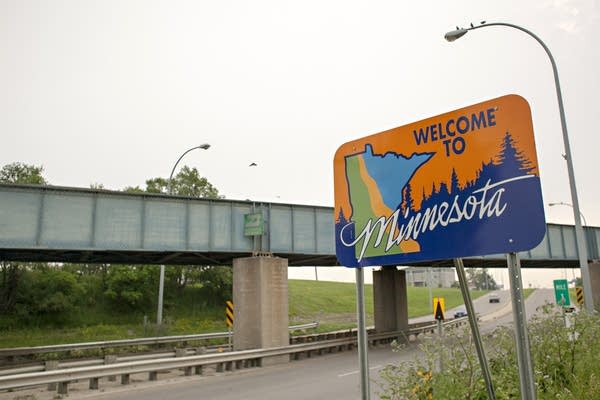In population chase, Minnesota fares better than most neighbors

A welcome to Minnesota sign greets motorists as they head east along U.S. 10 in Moorhead, Minn.
Ann Arbor Miller | MPR News 2015
Go Deeper.
Create an account or log in to save stories.
Like this?
Thanks for liking this story! We have added it to a list of your favorite stories.


